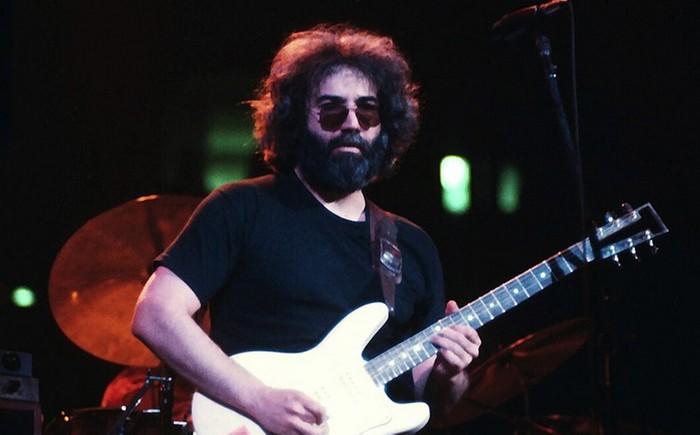Although Robert Hunter was never an official member of the Grateful Dead, he played a pivotal role as the primary writing partner for Jerry Garcia, the band’s singer and guitarist. Together, Hunter’s lyrics and Garcia’s music shaped the lore and repertoire of this iconic band.
Hunter penned some of the band’s most beloved songs, including “Dark Star,” “Ripple,” “Truckin’,” “Dire Wolf,” “China Cat Sunflower,” and “Terrapin Station.” He also collaborated with other band members, contributing lyrics to Bob Weir’s “Sugar Magnolia” and Phil Lesh’s “Box of Rain.”
Their connection to the band was so significant that when the Grateful Dead was inducted into the Rock and Roll Hall of Fame in 1994, Hunter received the honor alongside them, marking him as the only non-performer ever to be enshrined with a band. In addition to his songwriting, he was also a talented poet and singer-guitarist.
Hunter first met Garcia in 1962 when he was just 19 or 20 years old. Their initial encounter took place at a playhouse where Garcia worked as a volunteer lighting technician. During this time, Hunter began documenting their daily lives, which included a rotating cast of characters, oddballs, bohemians, intellectuals, and early hippies.
Their group often gathered at Kepler’s Bookstore in Menlo Park, engaging in lengthy discussions about history and the state of the world. They could spend hours sharing a single cup of coffee at a local café, much to the dismay of the owner. The group primarily consisted of young men, most of whom lacked “real” jobs, but they sensed something significant was on the horizon.
Hunter’s manuscript, which began in 1961 and was completed a year later, serves as a part memoir, part philosophical exploration, and part novel. He discovered it again in 1982, made some revisions, and then stored it in his attic for nearly 40 years.
Now, five years after Hunter’s death at 78, fans can finally explore this unique chronicle with the publication of The Silver Snarling Trumpet: The Birth of the Grateful Dead—The Lost Manuscript of Robert Hunter (256 pp., $32, Hachette Books).
The manuscript captures Hunter’s early impressions of Garcia, revealing his sharp wit and keen observational skills. He wrote that Garcia “practiced guitar anywhere from 24 to 38 hours a day,” noting his friend’s tendency to indulge in the “act of being Jerry.” Hunter described Garcia as having “the easygoing self-assurance of a person who is used to being forgiven for any gaucheness he might choose to perpetuate,” likening him to a white-bearded Urkel, complete with the phrase “Did I do thaaaat?”
Hunter’s writing style reflects the sometimes-precocious thoughts of a young man in his early 20s, filled with literary aspirations and a blend of participant and observer perspectives. What could come off as pretentious is often infused with humor and social commentary.
In one anecdote, Hunter and Garcia share increasingly absurd connections between artists, writers, and musicians, leading a friend to unwittingly agree with their ridiculous assertions. When the friend attempts to correct a blatant inaccuracy, the passion of Hunter and Garcia’s arguments ultimately sways him to their viewpoint.
The duo occasionally performed as a folk act to appreciative college audiences. Hunter marvels at Garcia’s burgeoning confidence, noting how he captivated audiences not just as a player and singer, but as a storyteller who could coax them into singing along to “Down by the Riverside.”
Their circle continued to gather, enjoying philosophical discussions, drinking wine, and attempting to unravel the universe’s mysteries while listening to Ravel’s Daphnis and Chloé—a time when drugs, even marijuana, had not yet entered their lives. The scenes blend together, leaving readers alternating between thoughts of “Wow, that makes sense” and “Oh, please…”
Hunter recreates dialogue with a storyteller’s eye, such as during a road trip when a friend ponders the countless cigarette butts scattered along the road, musing that one day, they might rise against humanity.
However, the relentless parties, chaotic chatter, and aimlessness of their “scene” eventually weigh on Garcia. He grows disillusioned after taking a job at a music store, possibly envisioning a future in which he could make a living from music. Hunter begins to feel similarly about his writing aspirations.
As the Scenesters drift apart, they recognize that the fleeting freedom of youth in such a specific moment could never be replicated.
The Silver Snarling Trumpet features only Jerry Garcia from the Grateful Dead, so those seeking a comprehensive biography of the band might not find it here, as they were still known by another name until 1965. However, for readers interested in a glimpse into the early minds of Garcia and Hunter, as well as the scene that shaped them, this manuscript offers a fascinating look at the origins of a culture that would ultimately thrive, with Jerry Garcia as its guiding star and Robert Hunter as its lyrical voice.
Related Topics
- Esa-Pekka Salonen Conducts Sibelius’ Symphony No. 5 and His Own Work Featuring Clarinetist Ricardo Morales
- Synth and Drum Duo AK/DK Announces Second Brighton Concert
- Eagles Experience Revives Don Henley’s First Drum Set at Troubadour Club

